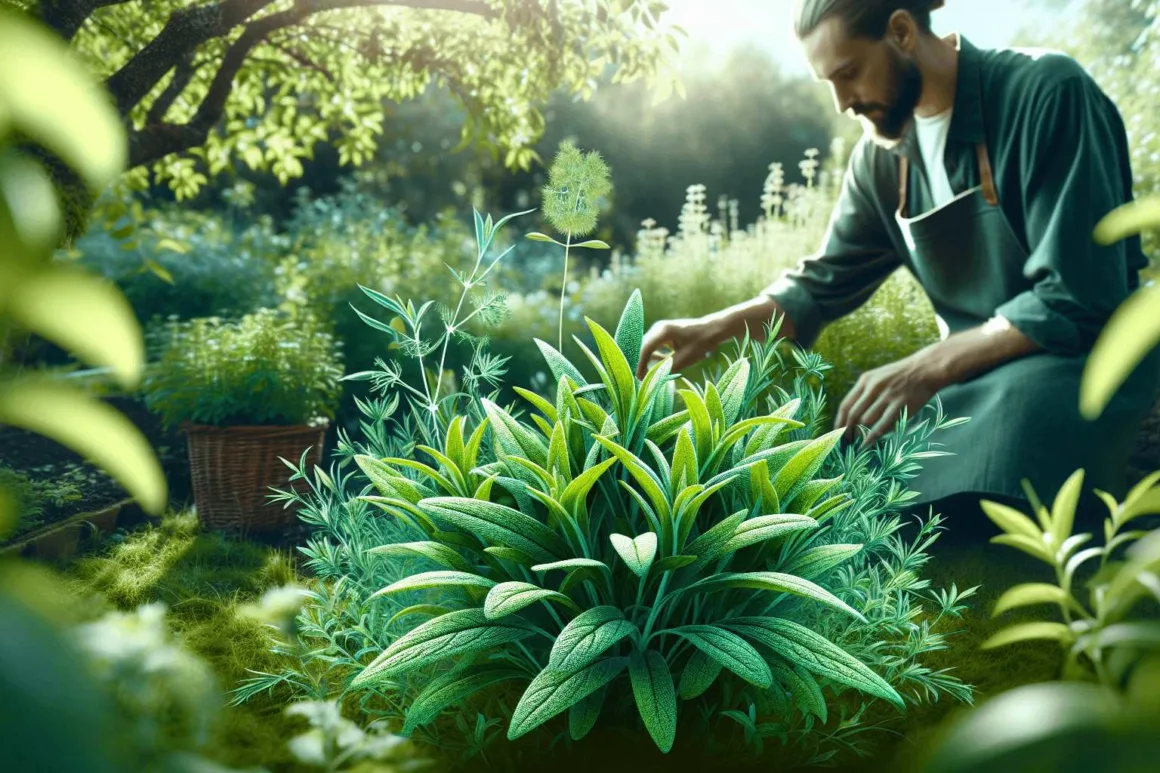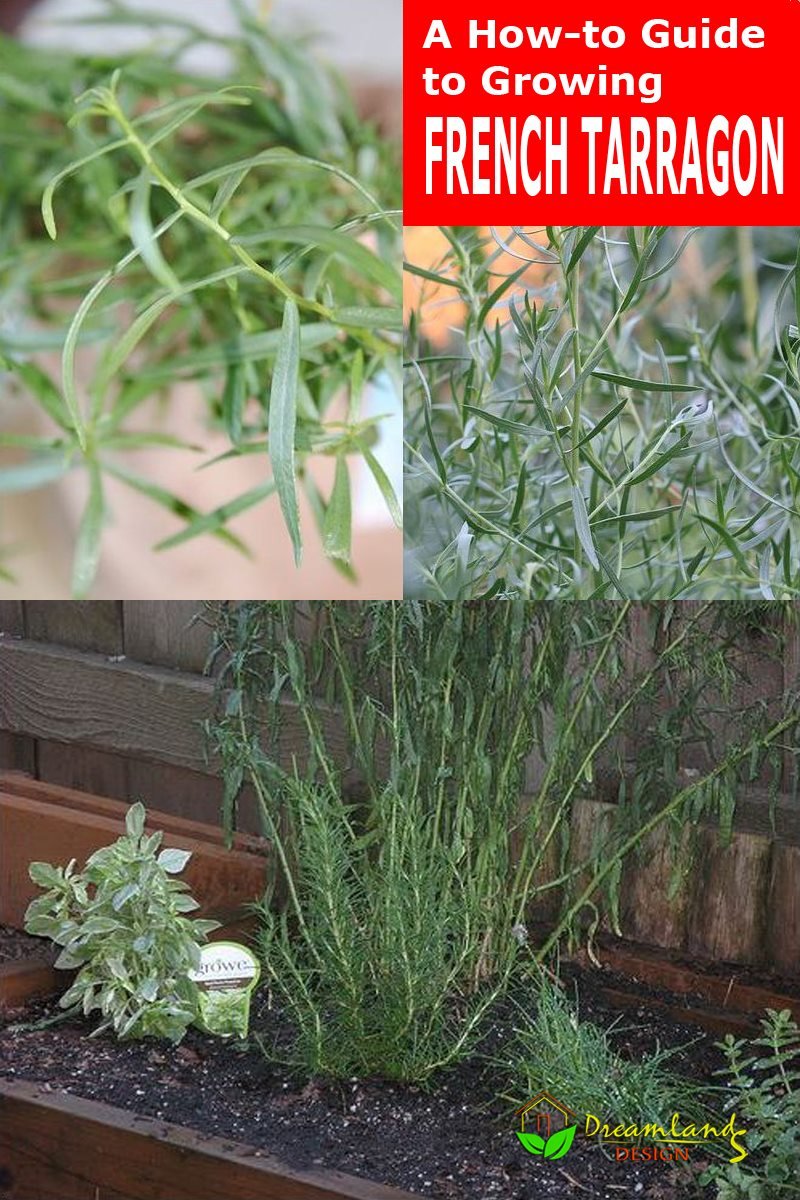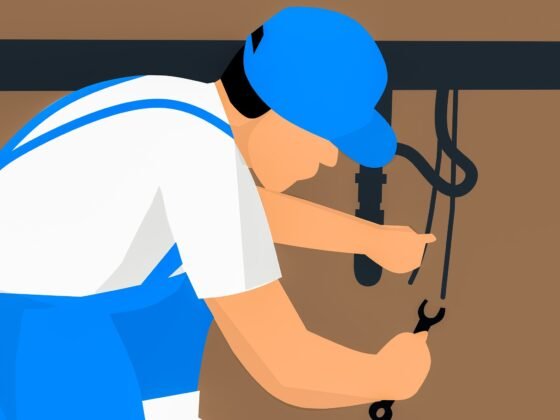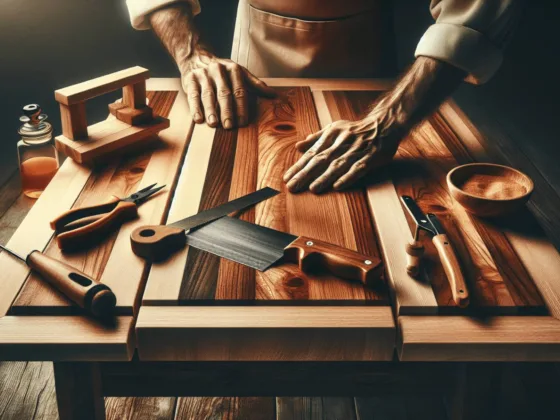Table of Contents Show
Introduction
Tarragon, often hailed as the ‘King of Herbs’ in French cuisine, is a culinary treasure for home cooks. Its unique anise-like flavor and subtle sweetness make it a favorite in sauces, dressings, and various dishes. If you’ve ever wondered how to grow tarragon at home, you’re in the right place.
This article will provide a comprehensive guide on growing and caring for French tarragon. From soil preparation to planting techniques, watering schedules, and troubleshooting common issues, we cover it all. Whether you’re a seasoned gardener or a beginner looking to add this versatile herb to your collection, you’ll find valuable tips and insights here.
Let’s embark on this flavorful journey together!
Understanding Tarragon Varieties
Definition and Characteristics of Tarragon as a Herb
Tarragon, known scientifically as Artemisia dracunculus, is a perennial herb prized for its aromatic leaves and distinctive flavor. This herb has slender, glossy, dark green leaves and produces small, inconspicuous flowers. It thrives in well-drained soil with plenty of sunlight.
Differences Between French and Russian Tarragon
When it comes to tarragon, there are two primary varieties: French tarragon (Artemisia dracunculus ‘Sativa’) and Russian tarragon (Artemisia dracunculoides).
French Tarragon
Flavor Profile: Known for its subtle yet complex flavor, French tarragon boasts hints of anise and vanilla, making it a favorite among chefs.
Culinary Uses: It’s widely used in classic dishes such as Béarnaise sauce, herbes de Provence, and various poultry recipes.
Propagation: French tarragon does not produce viable seeds; it’s typically propagated through stem cuttings or root divisions.
Russian Tarragon
Flavor Profile: Less refined than its French counterpart, Russian tarragon has a more bitter taste with less aromatic intensity.
Culinary Uses: Due to its stronger flavor, it’s less preferred in culinary applications and often used in traditional folk medicine instead.
Propagation: Unlike French tarragon, Russian tarragon can be grown from seed.
Benefits of Choosing French Tarragon for Home Gardens
Opting for French tarragon in your home garden offers several benefits:
- Superior Flavor: Its delicate flavor profile enhances the taste of various dishes without overpowering them.
- Low Maintenance: French tarragon is relatively easy to grow once established. It requires minimal care apart from regular watering and occasional fertilization.
- Versatile Culinary Use: From dressings to marinades, soups to sauces, this herb elevates many recipes with its unique taste.
- Perennial Growth: Being a perennial plant means it will come back year after year if properly cared for, providing a steady supply of fresh herbs.
- Culinary Versatility: The versatility of French tarragon extends beyond just flavor; it’s also known for its ability to blend seamlessly into various cuisines around the world.
Growing French tarragon in containers is also an excellent option for those with limited garden space. This method allows control over soil conditions and mobility to optimize sunlight exposure throughout the growing season.
Soil Preparation for Growing Tarragon
Creating the right soil environment sets the stage for healthy French tarragon growth. Here’s what you need to know about the best soil type for tarragon and how to get your garden beds ready.
Ideal Soil Conditions
French tarragon thrives in well-drained soil with a pH level between 6.5 and 7.5. The plant prefers a slightly sandy or loamy texture, which ensures proper drainage and prevents root rot.
Key Points:
- pH Level: Aim for a neutral to slightly alkaline pH (6.5-7.5).
- Drainage: Ensure the soil is well-drained to avoid waterlogging.
- Soil Texture: Sandy or loamy soils are ideal.
Steps to Prepare the Soil
1. Test Your Soil: Start by testing your garden soil’s pH using a home testing kit or by sending a sample to a local extension service.
2. Amend if Necessary: Based on the test results, you may need to adjust the pH:
- To Raise pH: Add lime to make the soil more alkaline.
- To Lower pH: Use sulfur or organic matter like pine needles to increase acidity.
3. Improve Drainage: Enhance soil structure by incorporating organic materials such as compost or well-rotted manure, which also boosts nutrient content.
4. Till and Aerate: Loosen the soil up to 12 inches deep using a garden fork or tiller. This promotes root growth and allows moisture and nutrients to penetrate more effectively.
5. Check Moisture Levels: Water the prepared bed lightly to ensure it holds moisture without becoming soggy.
Pro Tip: If your garden soil tends to retain too much water, consider planting French tarragon in raised beds or containers where you can better control drainage.
By preparing the soil properly, you’re giving your French tarragon plants an excellent foundation for robust growth and flavorful leaves.
Did you know? – Tarragon propagates via root cuttings, rhizome sprouts, and stem division.
Planting Techniques for French Tarragon
Best Time to Plant French Tarragon
French tarragon thrives when planted in the spring, right after the last frost has passed. This timing ensures that the young plants won’t be exposed to harsh cold, giving them a healthy start. Check your climate zone’s frost dates and plan accordingly. For most regions, this means planting between late March and early May.
Techniques for Planting Stem Cuttings or Root Divisions
French tarragon is typically propagated through stem cuttings or root divisions rather than seeds due to its poor germination rate. Here’s how you can effectively plant French tarragon using these methods:
Stem Cuttings:
- Select Healthy Stems: Choose a healthy, non-flowering stem from an existing French tarragon plant.
- Cut the Stem: Using sterilized scissors, cut a 4-6 inch section from the stem.
- Remove Lower Leaves: Strip off the leaves from the lower half of the cutting.
- Rooting Medium: Place the cutting in water or a well-draining soil mix to encourage root development.
- Transfer to Soil: Once roots have formed (usually within 2-4 weeks), transplant the cutting into your prepared garden bed.
Root Divisions:
- Dig Up the Plant: Carefully dig up an established French tarragon plant.
- Divide Roots: Separate the root ball into smaller sections, ensuring each section has a good amount of roots attached.
- Replant Sections: Plant each section in its new location, backfilling with soil and watering well.
Guide on Spacing Plants Appropriately
Proper spacing is crucial for promoting healthy growth and air circulation among your French tarragon plants:
- Space Each Plant: Ensure each plant is spaced about 18-24 inches apart.
- Row Spacing: If planting in rows, keep rows at least 24 inches apart to allow easy access for watering and maintenance.
By following these planting techniques and guidelines, you’ll set your French tarragon up for a thriving growth season. Transitioning from soil preparation to planting is a critical step in mastering how to grow tarragon effectively at home.
For those considering indoor gardening as an alternative, utilizing a grow tent can create an ideal growing environment for your French tarragon and other plants alike.
Growing Tarragon from Seed: A Step-by-Step Guide
Growing French tarragon from seed can be a bit tricky due to its long germination time and lower germination rates. However, with the right approach, it’s possible to cultivate this aromatic herb successfully.
Challenges of Growing French Tarragon from Seed
French tarragon is known for its finicky nature when started from seed. The seeds are often slow to germinate and may require specific conditions to thrive. This makes the process demanding but rewarding for dedicated gardeners.
Step-by-Step Guide on How to Grow French Tarragon from Seed
Whether you’re starting your seeds indoors or outdoors, following these steps will improve your chances of success:
1. Seed Selection:
- Choose high-quality seeds from a reputable supplier to ensure better germination rates.
2. Indoor Starting:
- Timing: Start seeds indoors 6-8 weeks before the last frost date in your area.
- Containers: Use seed trays or small pots filled with a well-draining seed-starting mix.
- Planting Depth: Sow seeds about 1/4 inch deep.
- Watering: Moisten the soil lightly, ensuring it’s damp but not waterlogged.
- Light: Place containers in a warm spot with indirect sunlight. Using a grow light can help maintain consistent light levels. Additionally, using a grow tent fan can significantly improve air circulation and temperature control, creating an ideal environment for your seedlings.
3. Outdoor Starting:
- Timing: Wait until after the last frost when the soil has warmed up.
- Location: Choose a sunny spot with well-drained soil.
- Planting Depth: Follow the same depth guidelines as indoor planting (1/4 inch deep).
- Spacing: Space seeds about 12 inches apart to allow room for growth.
4. Germination Tips:
- Maintain a temperature of around 70°F (21°C) for optimal germination.
- Keep the soil consistently moist but avoid overwatering as this may cause rot.
- Germination can take anywhere from 14 to 28 days, so patience is key.
5. Transplanting:
- If you started seeds indoors, transplant seedlings outdoors once they have at least two sets of true leaves and after any risk of frost has passed.
- Harden off seedlings by gradually exposing them to outdoor conditions over a week before transplanting.
By understanding these challenges and following this step-by-step guide, you’ll be better equipped to grow tarragon successfully from seed. Remember that growing other plants like the Mortgage Lifter Tomato, Celosia, or Fresno peppers also requires similar attention to detail and care.
Caring for Your French Tarragon Plants: Watering, Fertilizing, and Maintenance Tips
Watering Guidelines for Optimal Growth
French tarragon thrives in well-drained soil and requires a specific watering routine to flourish. Consistent moisture is crucial, but overwatering can lead to root rot. Aim to:
- Water deeply once a week: Ensure the water penetrates the soil to encourage deep rooting.
- Check soil moisture: Stick your finger about an inch into the soil; if it feels dry, it’s time to water.
- Avoid waterlogging: Use pots with drainage holes or ensure garden beds have good drainage.
To achieve optimal plant growth, it’s essential to follow these watering guidelines diligently.
Fertilization Tips
Feeding your French tarragon plants ensures they receive the necessary nutrients for robust growth. Here’s how you can effectively fertilize:
- Use a balanced fertilizer: Apply a 10-10-10 (N-P-K) fertilizer once in early spring as new growth appears.
- Follow up with compost: Mid-season, top-dress with aged compost to provide a slow-release nutrient boost.
- Avoid over-fertilizing: Excessive nitrogen can lead to lush foliage with less flavor. Stick to recommended amounts.
Importance of Mulching
Mulching around your tarragon plants serves multiple purposes—maintaining soil moisture, suppressing weeds, and regulating soil temperature. Effective mulching tips include:
- Apply organic mulch: Use straw, shredded leaves, or bark chips around the base of the plant.
- Maintain a 2-3 inch layer: This thickness helps retain moisture without smothering the plant roots.
- Keep mulch away from stems: Leave a small gap around the stem to prevent rot and allow airflow.
Caring for French tarragon plants involves mindful watering, balanced fertilization, and thoughtful mulching. These practices ensure your herb garden remains vibrant and productive throughout the growing season.
Propagation Methods: Extending Your Collection of French Tarragon Plants
Propagating French tarragon plants is an efficient way to expand your herb garden, ensuring a steady supply of this aromatic herb. The two most effective methods for propagating French tarragon are stem cuttings and root divisions.
Stem Cuttings
Step-by-Step Instructions
- Choose Healthy Stems: Select healthy, non-flowering stems from a mature French tarragon plant during late spring or early summer.
- Prepare the Cuttings: Cut a 4-6 inch section just below a leaf node using sterilized scissors or pruning shears. Remove the lower leaves on the cutting, leaving just a few at the top.
- Rooting Medium: Fill a small pot with a well-draining rooting medium, such as a mix of perlite and peat moss.
- Planting the Cutting: Dip the cut end in rooting hormone powder (optional) and insert it into the prepared potting mix. Firm the soil around the cutting to ensure stability.
- Watering and Care: Water lightly and cover with a plastic bag to create a humid environment. Place the pot in indirect sunlight.
- Root Development: Check for root development after 3-4 weeks by gently tugging on the cutting. Once roots are established, transplant the new plant into a larger pot or directly into your garden.
Root Divisions
Step-by-Step Instructions
- Timing Considerations: Perform root divisions either in early spring before new growth starts or in late fall after harvesting.
- Uprooting the Parent Plant: Carefully dig up an established French tarragon plant without damaging its roots.
- Dividing the Roots: Gently separate the root ball into smaller sections using your hands or a sharp knife, ensuring each section has both roots and shoots.
- Replanting Divisions: Replant each division immediately into prepared soil in your garden or pots. Space them adequately to allow for growth.
- Aftercare: Water thoroughly after planting and maintain consistent moisture levels until new growth appears.
Timing Considerations
- Spring and early summer are ideal for stem cuttings due to active growth phases, which enhance rooting success.
- Early spring or late fall is best for root divisions when plants are dormant or less actively growing, reducing stress on divided sections.
Propagating French tarragon through these methods ensures robust plants that can thrive in various conditions, giving you ample fresh herbs for culinary adventures year-round.
By mastering these techniques, you’ll be well-equipped to multiply your French tarragon plants effectively, ensuring your kitchen garden remains bountiful and vibrant.
Harvesting and Storing Your Bountiful Crop of French Tarragon Leaves
Best Time to Harvest French Tarragon Leaves for Maximum Flavor
Timing is everything when it comes to harvesting French tarragon leaves. The optimal time to harvest is in the morning after the dew has evaporated but before the sun gets too strong. This ensures that the essential oils, which give tarragon its unique flavor, are at their peak.
Key Tips:
- Seasonal Timing: Aim to harvest tarragon leaves just before the plant starts to flower. For most regions, this is typically late spring through early summer.
- Frequency: Regularly harvesting your tarragon encourages new growth. Aim to trim every few weeks during the growing season.
Techniques for Cutting Without Damaging the Plant
To ensure a healthy plant and continuous production, precise cutting techniques are essential.
- Use Sharp Scissors or Pruners: This minimizes damage to the plant stems.
- Cut Above a Leaf Node: Trim about one-third of the way down from the top of each stem, just above a leaf node. This encourages bushier growth and prevents legginess.
- Avoid Cutting Too Much: Never remove more than one-third of the plant at a time; it can stress the plant and inhibit future growth.
Pro Tip: For the best flavor, use freshly cut tarragon immediately in your dishes. If storing, follow these guidelines:
Storing Your Harvested French Tarragon Leaves
Proper storage methods preserve tarragon’s flavor and usability over time.
Short-Term Storage:
- Refrigeration: Wrap your fresh tarragon in a damp paper towel and place it inside a plastic bag or airtight container in the fridge. It will stay fresh for up to two weeks.
Long-Term Storage:
- Drying: Air-dry or use a dehydrator to dry your tarragon leaves. Once dried, store them in an airtight container away from light and heat.
- Freezing: Place whole sprigs or chopped leaves in ice cube trays with water or olive oil, then freeze. Transfer frozen cubes to freezer bags for easy portioning.
These techniques ensure you always have aromatic French tarragon ready for your culinary adventures!
Cooking with Freshly Harvested French Tarragon: Nutrition Benefits and Culinary Uses
French tarragon is not just a flavorful addition to your culinary repertoire; it also brings a variety of nutritional benefits that can enhance your overall health. Incorporating fresh herbs like French tarragon into your diet offers vitamins, minerals, and antioxidants that support well-being.
Nutritional Advantages
French tarragon is rich in:
- Vitamins: Especially Vitamins A and C, which are essential for immune function, skin health, and vision.
- Antioxidants: Help combat oxidative stress and reduce inflammation.
- Minerals: Including iron, calcium, and manganese—important for bone health and metabolic functions.
Adding fresh tarragon to meals can boost flavor without adding calories, making it a smart choice for those looking to maintain a healthy diet.
Popular Recipes Featuring French Tarragon
French tarragon’s unique flavor pairs well with various dishes. Here are some popular ways to use this herb:
Béarnaise Sauce
A classic sauce often served with steak or grilled fish. The fresh tarragon leaves add a distinctive anise-like flavor that elevates the dish.
Ingredients:
- 2 tbsp fresh tarragon leaves (chopped)
- 1/4 cup white wine vinegar
- 2 egg yolks
- 1/2 cup unsalted butter (melted)
Instructions:
- Combine vinegar and chopped tarragon in a saucepan; simmer until reduced by half.
- Whisk egg yolks in a bowl over simmering water until thickened.
- Slowly add melted butter while whisking continuously.
- Stir in the reduced vinegar mixture.
- Season with salt and pepper.
Tarragon Chicken Salad
A refreshing twist on traditional chicken salad, perfect for sandwiches or as a light dinner.
Ingredients:
- 2 cups cooked chicken (shredded)
- 1/4 cup mayonnaise
- 2 tbsp fresh tarragon leaves (chopped)
- 1 celery stalk (diced)
Instructions:
- In a large bowl, mix shredded chicken, mayonnaise, chopped tarragon, and diced celery.
- Season with salt and pepper to taste.
- Serve chilled.
Tips for Using Fresh vs. Dried Tarragon
Using fresh leaves:
- Best added at the end of cooking to preserve their delicate flavor.
- Ideal for garnishing salads, soups, or finishing sauces.
Using dried leaves:
- More concentrated in flavor; use sparingly compared to fresh.
- Great for slow-cooked dishes where they can rehydrate and release their essence gradually.
Experimenting with both forms of French tarragon can help you discover new dimensions of flavor in your favorite recipes.
Troubleshooting Common Problems When Growing French Tarragons at Home
Growing French tarragon at home can be a delightful experience, but it comes with its set of challenges. Identifying and addressing common issues promptly ensures your plants stay healthy and productive.
Identifying Signs of Overwatering or Under-Watering
French tarragon is quite particular about its watering needs. Recognizing the signs of overwatering or under-watering can save your plant from stress or damage.
Overwatering:
- Leaves may turn yellow and become soft.
- The soil is consistently wet, leading to root rot.
- Fungal growth on the soil surface.
Under-Watering:
- Leaves will appear dry and may curl or become brittle.
- The plant might wilt during hot parts of the day.
- Dry and cracked soil around the plant base.
Maintaining a balance in watering is crucial. Ensure the soil is well-drained and only water when the top inch feels dry to touch.
Solutions for Pest Management
Pests such as aphids and spider mites can pose significant threats to your French tarragon plants. Monitoring for pests regularly and taking swift action can prevent infestations from escalating.
Aphids:
- Look for clusters of small, soft-bodied insects on new growth.
- Leaves may be sticky with honeydew, a byproduct of aphid feeding.
Spider Mites:
- Fine webbing on the undersides of leaves.
- Tiny, discolored spots on leaves where mites have fed.
Management Solutions:
- Manual Removal: Use a strong jet of water to dislodge pests from plants.
- Neem Oil: Spray neem oil solution as a natural pesticide that’s safe for herbs.
- Insecticidal Soap: Apply insecticidal soap directly to affected areas to eliminate pests without harming the plant.
Maintaining Healthy Growth
By paying attention to these common issues, you’ll foster robust growth in your French tarragon plants. Regular checks for moisture levels and pest presence, combined with appropriate interventions, keep your herb garden thriving and deliciously rewarding.
Conclusion: Start Growing Your Own Deliciously Flavorful Batch of Fresh Herbs Today!
Growing French tarragon at home can be a delightful and rewarding experience. This easy-to-care-for herb not only adds a unique flavor to your culinary creations but also brings the satisfaction of harvesting fresh, aromatic leaves from your garden.
By following the tips and techniques outlined in this guide, you’ll learn how to grow French tarragon easily at home. From understanding soil preparation and planting techniques to mastering the art of propagation and pest management, you’ll have all the knowledge needed for success.
If you’re interested in expanding your herb garden beyond just tarragon, you might want to explore how to grow herbs which provides valuable insights into cultivating various herbs in your kitchen. Additionally, if you’re considering gardening during the colder months, you can find useful information on growing more herbs indoors in winter which could prove beneficial.
For those who might be short on outdoor space, creating a garden in a pot could be an ideal solution. This method is particularly recommended for new gardeners as it simplifies the gardening process.
Ready to get started? Dive into the world of gardening and elevate your home-cooked meals with the fresh, vibrant taste of homegrown French tarragon. Happy gardening! 🌿
FAQs (Frequently Asked Questions)
French tarragon is a culinary herb known for its distinct flavor profile, making it a favorite among home cooks. It adds depth to various dishes, especially sauces and dressings, and is valued for its aromatic qualities.
French tarragon has a more robust flavor and is preferred in culinary applications, while Russian tarragon lacks the same intensity of flavor. Choosing French tarragon for your garden ensures you have the best variety for cooking.
To prepare the soil for French tarragon, ensure it has good drainage and a pH level between 6.0 and 7.0. Amend the soil with organic matter if necessary to improve fertility before planting.
The best time to plant French tarragon is in spring after the last frost. Use stem cuttings or root divisions, ensuring proper spacing between plants to promote healthy growth.
Growing French tarragon from seed can be challenging due to its long germination time. It’s recommended to start seeds indoors or outdoors under optimal conditions to improve chances of successful germination.
Caring for French tarragon includes regular watering, fertilizing during the growing season, and mulching around the plants to maintain moisture levels in the soil. Pay attention to signs of overwatering or underwatering by observing leaf appearance.













1 comment
Thank you for the wonderful information. I have lots of plants that look like tarragon none make mt tongue tingle. Now I know how to find it.